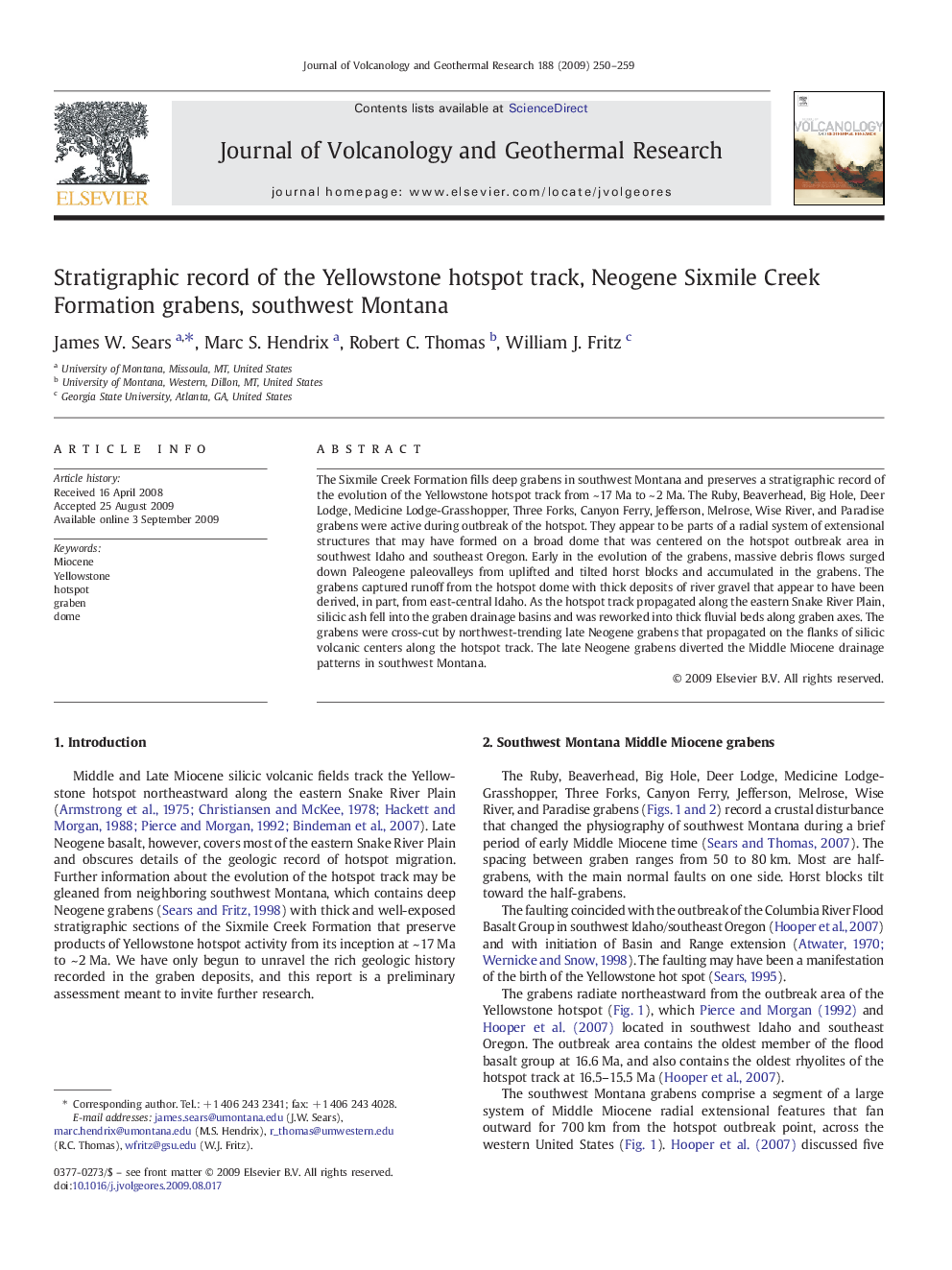| Article ID | Journal | Published Year | Pages | File Type |
|---|---|---|---|---|
| 4713184 | Journal of Volcanology and Geothermal Research | 2009 | 10 Pages |
The Sixmile Creek Formation fills deep grabens in southwest Montana and preserves a stratigraphic record of the evolution of the Yellowstone hotspot track from ~ 17 Ma to ~ 2 Ma. The Ruby, Beaverhead, Big Hole, Deer Lodge, Medicine Lodge-Grasshopper, Three Forks, Canyon Ferry, Jefferson, Melrose, Wise River, and Paradise grabens were active during outbreak of the hotspot. They appear to be parts of a radial system of extensional structures that may have formed on a broad dome that was centered on the hotspot outbreak area in southwest Idaho and southeast Oregon. Early in the evolution of the grabens, massive debris flows surged down Paleogene paleovalleys from uplifted and tilted horst blocks and accumulated in the grabens. The grabens captured runoff from the hotspot dome with thick deposits of river gravel that appear to have been derived, in part, from east-central Idaho. As the hotspot track propagated along the eastern Snake River Plain, silicic ash fell into the graben drainage basins and was reworked into thick fluvial beds along graben axes. The grabens were cross-cut by northwest-trending late Neogene grabens that propagated on the flanks of silicic volcanic centers along the hotspot track. The late Neogene grabens diverted the Middle Miocene drainage patterns in southwest Montana.
